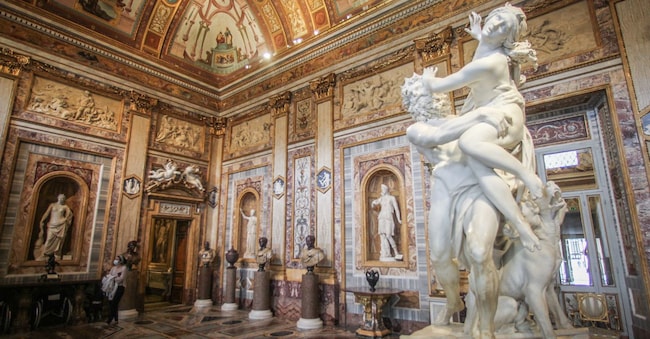Museums, directors increasingly managers


The second race to direct autonomous museums began in midsummer. Following the appointment in July of the so-called "superdirectors" for the five top-tier institutions currently in the process of being appointed— the Galleria dell'Accademia in Florence and the Bargello Museums , the National Archaeological Museum of Naples , the National Roman Museum , the Royal Museums of Turin , and the Colosseum Archaeological Park —the Ministry of Culture published the call for applications for 14 additional museums in early August.
And while the guessing game opens for places like the Pantheon and Castel Sant'Angelo , the Royal Palace of Naples and the archaeological park of Herculaneum , the Arts and culture knowledge centre at Sda Boccon i takes stock of who the museum directors have been up to now and how the leadership of cultural sites has changed in these ten years of the Franceschini reform.
The new research, conducted on the CVs of 88 directors (current, completed, or interim positions), reveals a paradigm shift: the "pure humanist" director is giving way to an increasingly managerial hybrid profile . While in 2015, 95% of appointments reported cultural skills related to research and curation, by 2024, the figure had dropped to 76%. In contrast, nearly 90% of top executives today boast managerial skills, developed in the field through governance, personnel management, and strategic partnerships.
This signal doesn't erase specialized knowledge, but highlights how running a museum now also means knowing how to plan, finance, measure, and engage the public and sponsors. "Today we need cultural leaders and public managers capable of combining vision and management skills with equal strength," explain Professors Alex Turrini and Marco Luchetti from Bocconi. A paradigm shift in line with the sector's challenges: from digitalization to fundraising campaigns, to managing increasingly complex tourist flows .
The "managerial shift" also affects the structure of career paths: the average term of office is 6.2 years, exceeding the standard contractual term of four years. Furthermore, more than half of the directors have been confirmed for a second term . A trend toward continuity is therefore evident, even though internal mobility among museums—which translates into the exchange of skills—remains low: only three directors, after a second term, have moved to another state institution.
Regarding gender, women represent 44.3% of appointments : a figure that signals, according to the study, "a path of progressive evolution in gender representation, still in the process of being established, but already oriented towards greater equality."
On the internationalization front, however, the presence of foreign directors is more concentrated in the first appointments following the reform. This is perhaps also due to the changes in the appointment procedures for the selection committees, which from 2020 will provide for greater institutional representation, reducing the weight of international members.
The average director is described as "an Italian man in his 50s who earned a degree in literature 25 years before his appointment. He holds a master's degree and a doctorate, has 24 years of seniority, and has worked for a private entity for approximately 10 years. He has previous experience both in museum management and at the Ministry of Culture. He possesses both managerial and cultural skills, both developed over a period of approximately 12 years."
But when we dig into the details, we find some small differences: in small museums (with revenues under €20,000), directors are on average older and have less previous management experience, while in medium-sized and large institutions, there is increased exposure to private projects, more structured governance, and previous senior management positions. This is where the demand for project management, partnerships, and audience development becomes more explicit.
The challenge now shifts to new calls for proposals. The MiC is seeking hybrid figures, capable of communicating with the public and markets, managing complex teams, and simultaneously safeguarding cultural heritage. What does this mean for the current calls for proposals? That the recipe for success is no longer just scientific excellence. For SDA Bocconi, the next step is to structure more robust management training programs, currently left almost entirely to field experience , and to incentivize mobility programs between institutions. In short: overcome the false distinction between director-intellectual and director-manager, and consolidate a profile that combines cultural vision, economic sustainability, and public impact. An approach that, according to the researchers, could "strengthen the system's cohesion and stimulate innovation."
News and insights on political, economic, and financial events.
Sign upilsole24ore




